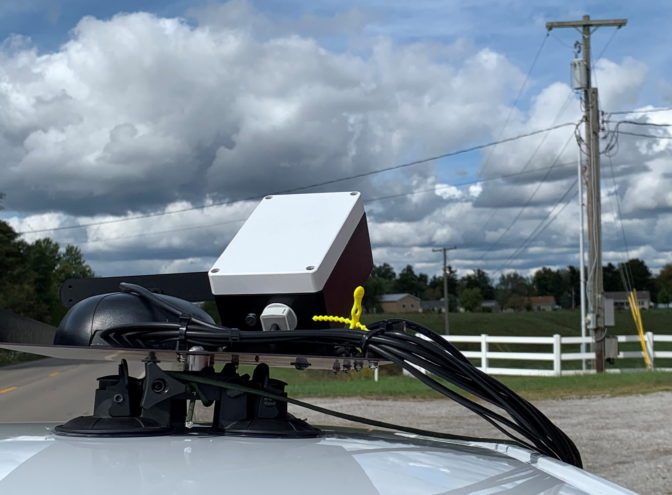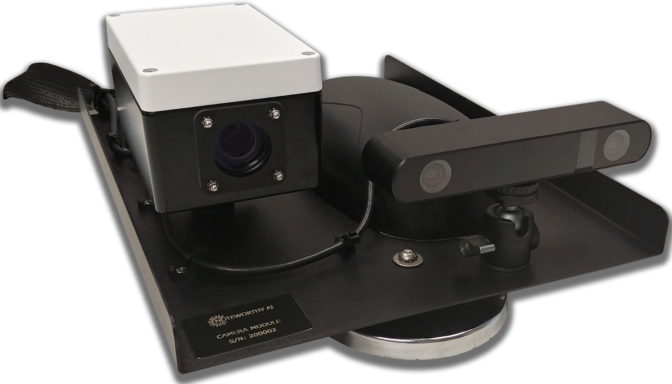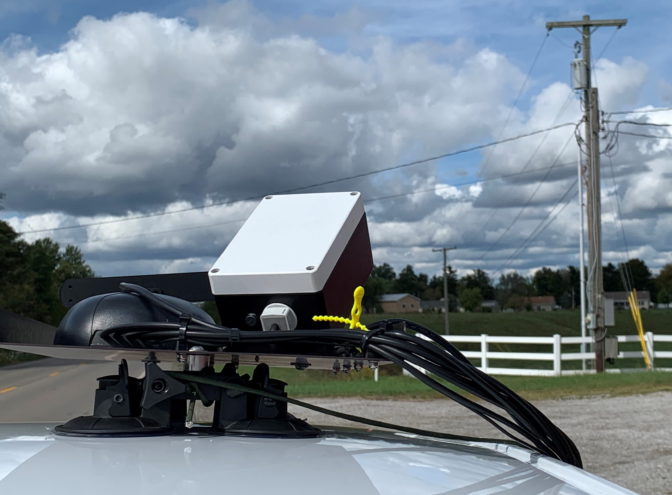It was the kind of message Connor McCluskey loves to find in his inbox.
As a member of the product innovation team at FirstEnergy Corp. — an electric utility serving 6 million customers from central Ohio to the New Jersey coast — his job is to find technologies that open new revenue streams or cut costs.
In the email, Chris Ricciuti, the founder of Noteworthy AI, explained his ideas for using edge computing to radically improve how utilities track their assets. For FirstEnergy, those assets include tens of millions of devices mounted on millions of poles across more than 269,000 miles of distribution lines.
Bucket Trucks Become Smart Cameras
Ricciuti said his startup aimed to turn every truck in a utility’s fleet into a smart camera that takes pictures of every pole it passes. What’s more, Noteworthy AI’s software would provide the location of the pole, identify the gear on it and help analyze its condition.
“I saw right away that this could be a game changer, so I called him,” said McCluskey.
In the U.S. alone, utilities own 185 million poles. They spend tens, if not hundreds, of millions of dollars a year trying to track the transformers, fuses and other devices on them, as well as the vegetation growing around them.
Utilities typically send out workers each year to manually inspect a fraction of their distribution lines. It’s an inventory that can take a decade, yet the condition of each device is critical to delivering power safely.
5x More Images in 30 Days
In a pilot test last summer, Noteworthy AI showed how edge computing gets better results.
In 30 days, two FirstEnergy trucks, outfitted with the startup’s smart cameras, collected more than 5,000 high-res images of its poles. That expanded the utility’s database more than fivefold.
“People were astounded at what we could do in such a short time frame,” said McClusky.
What’s more, the pictures were of higher quality than those in the utility’s database. That would help eliminate wasted trips when actual line conditions vary from what engineers expect to find.

Use Cases Multiply
News of the pilot program spread to other business units.
A team that inspects FirstEnergy’s 880,000 streetlights and another responsible for tracking vegetation growth around its lines wanted to try the technology. Both saw the value of having more and better data.
So, an expanded pilot is in the works with more trucks over a larger area.
It’s too early to estimate the numbers, but McCluskey “felt right away we could find some significant cost savings with this technology — in a couple years I can imagine its use expanded to all our states,” he said.
An Inside Look at Edge Computing
In a unit the size of a small cake box that attaches to a truck with magnets or suction cups, Noteworthy AI packs two cameras and communications gear. It links to a smaller unit inside the cab that processes the images and AI on an NVIDIA Jetson Xavier NX.
“We developed a pretty sophisticated workflow that runs at the edge on Jetson,” Ricciuti said.
It uses seven AI models. One model looks for poles in images taken at 30 frames/second. When it finds one, it triggers a higher res camera to take bursts of 60-megabyte pictures.
Other models identify gear on the poles and determine which images to send to a database in the cloud.

“We’re doing all this AI compute at the edge on Jetson, so we don’t have to send all the images to the cloud — it’s a huge cost savings,” Ricciuti said.
“With customer use cases growing, we’ll graduate to products like Jetson AGX Orin in the future — NVIDIA has been awesome in computing at the edge,” he added.
Software, Support Speeds Startup
The startup uses NVIDIA TensorRT, code that keeps its AI models trim, so they run fast. It also employs the NVIDIA JetPack SDK with drivers and libraries for computer vision and deep learning as well as ROS, an operating system, now accelerated on Jetson.
In addition, Ricciuti ticks off three benefits from being part of NVIDIA Inception, a program designed to nurture cutting-edge startups.
“When we have engineering questions, we get introduced to technical people who unblock us; we meet potential customers when we’re ready to go to market; and we get computer credits for GPUs in the cloud to train our models,” he said.
AI Spells Digital Transformation
The GPUs, software and support help Ricciuti do the work he loves: finding ways AI can transform legacy practices at large, regulated companies.
“We’re just seeing the tip of the iceberg of what we can do as people are being forced to innovate in the face of problems like climate change, and we’re getting a lot of interest from utilities with large distribution networks,” he said.
Learn more about how NVIDIA is accelerating innovation in the energy industry.
